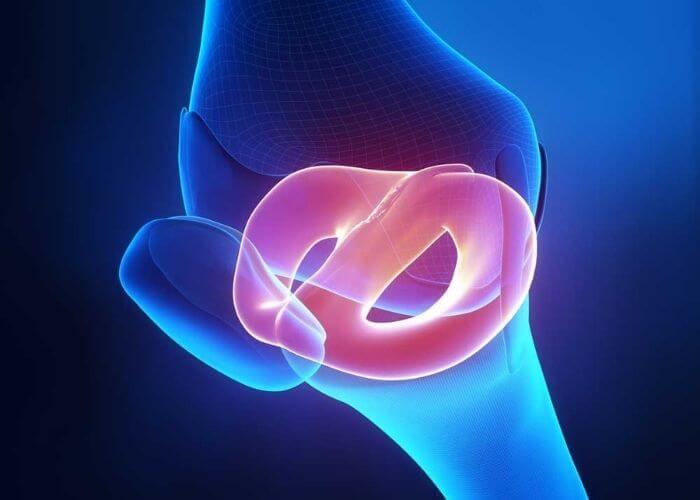A radial meniscus tear is a common knee injury that can be painful and debilitating, especially for athletes. It can occur when the knee is twisted or rotated while bearing weight, causing the meniscus to tear from the outer edge towards the center of the knee. Athletes who play sports that require sudden stops and turns, such as basketball, soccer, and football, are at a higher risk of developing a radial meniscus tear. However, anyone can develop this type of injury, especially as they age.
Get an Appointment
Complete The Form Below And We’ll Get Back To You Immediately.
What is a Radial Meniscus Tear?
The meniscus is a C-shaped piece of cartilage located in the knee joint that provides cushioning, stability, and lubrication to the joint. It acts like a shock absorber and prevents the bones in the knee joint from rubbing against each other. A radial meniscus tear occurs when the meniscus tears from the outer edge towards the center of the knee. This type of tear is different from a horizontal or vertical tear, which occurs when the tear is parallel to the plane of the meniscus. A radial tear can be more difficult to repair because it involves a larger portion of the meniscus.
Symptoms of a Radial Meniscus Tear
The symptoms of a radial meniscus tear include pain, swelling, and stiffness in the knee joint. These symptoms can be exacerbated by physical activities such as walking, running, and jumping. In some cases, people with a radial meniscus tear may experience a clicking or popping sensation in the knee joint. If you experience any of these symptoms, it is important to see a doctor to get a proper diagnosis and treatment plan.
Things to Consider Before Undergoing Surgery
According to the Centers for Disease Control and Prevention (CDC), meniscus tears are one of the most common knee injuries, with about 700,000 surgeries performed each year in the United States alone. While surgery may be necessary in some cases, it comes with several downsides that patients should consider before taking that step.
Radial meniscus tear repair is usually done surgically, with the goal of removing the damaged tissue. The procedure is done under general anesthesia and involves making small incisions around the knee joint. The surgeon inserts a small camera, called an arthroscope, into one of the incisions to visualize the inside of the knee joint. Surgical instruments are inserted through the other incisions to remove the damaged tissue. The incisions are then closed, and the patient is sent to recovery.
Surgery may require a long recovery time, ranging from several weeks to months. During this time, patients may need to use crutches or a brace to keep weight off the knee joint and allow it to heal properly. Patients may also need to undergo physical therapy to regain strength and range of motion in the knee joint. Additionally, surgery may require time off from work, which can impact a patient’s livelihood. There is also a risk of complications, such as infection and blood clots, which can lead to further health problems.
Sign Up And Enjoy the Free Ebook, '5 Steps To Managing and Treating Your Knee Pain Today!
When patients visit our clinic, our doctors recommend they do all of these things to alleviate their symptoms. Right now, you can download the ebook for free to learn more about how to start changing your habits and improve your condition. It costs nothing, and you’ll get it delivered to your inbox immediately.
An Alternative Treatment: Stem Cell Therapy
Stem cell therapy provides an alternative option for orthopedic injuries like a radial meniscus tear. Stem cells are undifferentiated cells that can differentiate into various types of cells, including cartilage and bone cells. This means that stem cells can help repair and regenerate damaged tissues. Stem cell therapy is a non-invasive procedure that involves injecting stem cells into the affected area.
At GIOSTAR Chicago, we are world leaders in stem cell therapy research and application. Our team of experts has years of experience in treating orthopedic injuries like radial meniscus tears with stem cell therapy. We use ultrasound-guided imaging for orthopedic stem cell treatments, which allows us to deliver the stem cells directly to the affected area with pinpoint accuracy. Ultrasound-guided imaging also allows for real-time visualization of the injection site, ensuring that the stem cells are delivered precisely where they are needed.
One of the benefits of ultrasound-guided imaging for injections is that it reduces the risk of complications. The imaging allows the physician to avoid blood vessels and nerves, which can be damaged during the injection process. This means that patients are less likely to experience pain, swelling, or other complications.
Stem cell therapy offers many benefits over surgery. It is minimally invasive and does not require general anesthesia. Patients can usually resume their normal activities within a few days of the procedure. Stem cell therapy also has a lower risk of complications than surgery. Patients do not need to worry about the risks of infection or blood clots associated with surgery.
At GIOSTAR Chicago, we take a personalized approach to stem cell therapy. Our experienced physicians will evaluate your condition and develop a customized treatment plan that is tailored to your specific needs. We use the latest technology and equipment to ensure that you receive the best possible care. When you come to GIOSTAR Chicago, you can rest assured that you are in good hands.
Is Stem Cell Therapy Right for You?
If you are considering radial meniscus tear repair, you may want to consider stem cell therapy as an alternative. Stem cell therapy is a safe and effective treatment option that can help you recover from your injury without the risks associated with surgery. At GIOSTAR Chicago, we offer cutting-edge stem cell treatments that can help you get back to doing the things you love. Our team of experts is dedicated to helping you achieve optimal health and wellness.
Some Items to Reflect on If You’re Considering Radial Meniscus Tear Repair
Before taking the step of surgery to repair a radial meniscus tear, it is essential to understand the downsides of surgery. Stem cell therapy provides a non-invasive alternative that can help you recover from your injury without the risks associated with surgery. At GIOSTAR Chicago, we offer cutting-edge stem cell treatments that can help you get back to doing the things you love. Contact us or Call us today to learn more about our stem cell therapy services for radial meniscus tear repair.
About GIOSTAR Chicago:
GIOSTAR Chicago is dedicated to developing the most advanced stem cell-based technologies and providing the best regenerative medicine for people who want to enjoy a healthy and active lifestyle.



